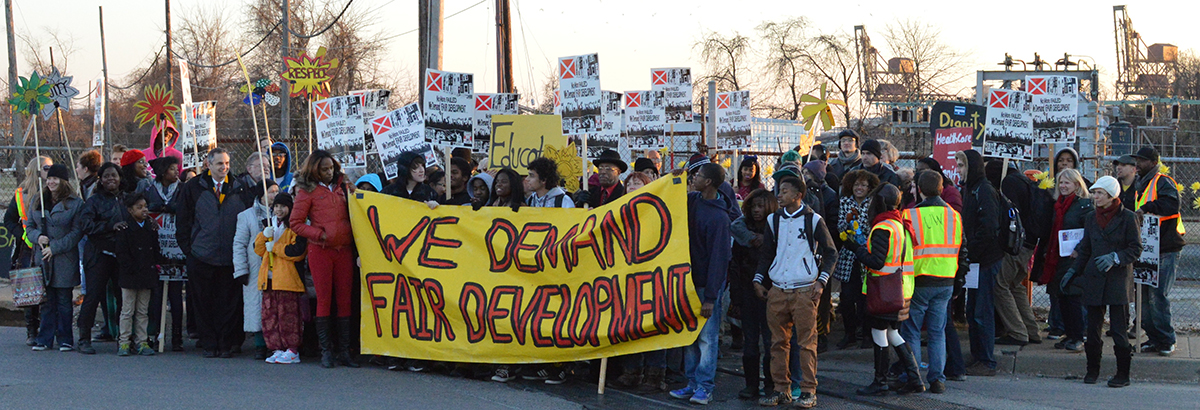
Students, residents, and advocates successfully defeated Energy Answers’ plan to build the nation’s largest trash-burning incinerator in the Curtis Bay neighborhood of Baltimore in 2016.
Massive waste-to-energy incinerator threatened residents’ health
In September of 2009, Energy Answers International applied to construct a new waste-to-energy (WTE) power plant in Curtis Bay, a community in Baltimore. Curtis Bay has a history of being overburdened by industry. In 2007 and 2008, Curtis Bay’s zip code ranked first in the entire country for quantity of toxic air pollutants. Currently, it ranks first in Maryland in these pollutants. The WTE incinerator would have been located in the Fairfield section of Curtis Bay, a mile from the Benjamin Franklin High School and the Curtis Bay Elementary School.
If built, this facility would have been the largest trash-burning incinerator in the United States, able to burn 4,000 tons of waste per day. It would have burned different kinds of trash, including plastic, rubber, vinyl, and metal, in addition to regular household garbage.
This plant was permitted to emit 1,000 pounds of lead and 240 pounds of mercury each year, making it one of the largest mercury emitters in the state. Mercury pollution has been linked to neurological and kidney damage and can cause harm in very small amounts, particularly in children. Other permitted pollutants included NOx, lead, dioxins, and particulate matter, which are linked to cancer, heart disease, increased risk of diabetes, aggravated asthma and other respiratory problems. These health impacts were especially worrisome because of the two schools located less than a mile from the plant’s proposed property boundary.
Curtis Bay residents and students led campaign to stop the incinerator
When students at Benjamin Franklin High School found out about Energy Answers’ plan to construct the nation’s largest trash-burning incinerator less than a mile away from their school, they began a years-long campaign to stop it. They organized as Free Your Voice, a committee out of the Baltimore-based human rights organization United Workers.
The students of Free Your Voice went door-to-door to speak with neighbors about the incinerator proposal, marched from their high school to the site of the proposed incinerator, successfully lobbied institutions including the Baltimore City Public School system to end their contracts with Energy Answers, and led an act of civil disobedience at the Maryland Department of the Environment.
CCAN, along with our partners at the Environmental Integrity Project, provided technical and legal assistance to the youth-led campaign against the incinerator, both about the risks associated with this proposed facility and the opportunities for public input on the permits. We held forums, attended community meetings, and joined United Workers and Free Your Voice in door-to-door canvassing to speak with residents closest to the proposed site. In the end, hundreds of residents submitted formal comments on the draft permits to the Public Service Commission, highlighting vital pollution standards that needed strengthening. Local residents voiced concerns at every stage of the permitting process.
In June 2016, after months of pressure from Free Your Voice and the strong anti-incinerator coalition they built, the Maryland Department of the Environment (MDE) determined that Energy Answers’ 2010 permit had expired.
What’s Next
Free Your Voice was never content just to stop the incinerator. Instead, they’re calling for a broader move toward fair development and community control of land in Baltimore. Learn more about the 20/20 Vision for Fair Development here.

